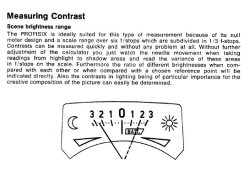Jmqx
Member
- Joined
- Aug 22, 2009
- Messages
- 1
- Format
- 35mm
Hi all,
I have recently acquired a gossen profisix light meter which I intend on using with my Spotmatic F, however I have come across a problem:
Following the instructions to take an incident reading I set ASA speed, then point and take a reading, then turn the outside dial to match the exposure needle to the correct exposure.
However, should I then not be able to vary f-stop and shutter speeds and receive corresponding movements on the needle as to the exposure - such as can be done on the camera itself? currently the only needle movment i get corresponds to movement of the outer ring, none of the others seem to do anything. Of course I am doing all of this during the 30 second limit, and the same applies when taking a continuous reading.
Am I missing something here?!
If you can help, please do!
I have recently acquired a gossen profisix light meter which I intend on using with my Spotmatic F, however I have come across a problem:
Following the instructions to take an incident reading I set ASA speed, then point and take a reading, then turn the outside dial to match the exposure needle to the correct exposure.
However, should I then not be able to vary f-stop and shutter speeds and receive corresponding movements on the needle as to the exposure - such as can be done on the camera itself? currently the only needle movment i get corresponds to movement of the outer ring, none of the others seem to do anything. Of course I am doing all of this during the 30 second limit, and the same applies when taking a continuous reading.
Am I missing something here?!
If you can help, please do!












